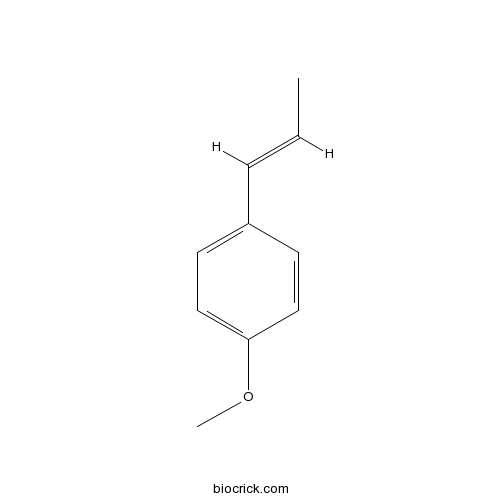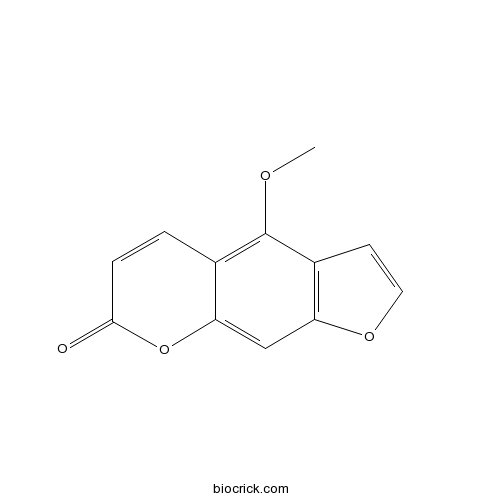Ficus carica
Ficus carica
1. The products in our compound library are selected from thousands of unique natural products; 2. It has the characteristics of diverse structure, diverse sources and wide coverage of activities; 3. Provide information on the activity of products from major journals, patents and research reports around the world, providing theoretical direction and research basis for further research and screening; 4. Free combination according to the type, source, target and disease of natural product; 5. The compound powder is placed in a covered tube and then discharged into a 10 x 10 cryostat; 6. Transport in ice pack or dry ice pack. Please store it at -20 °C as soon as possible after receiving the product, and use it as soon as possible after opening.
Natural products/compounds from Ficus carica
- Cat.No. Product Name CAS Number COA
-
BCN9032
Anethole, trans-4180-23-8
Instructions

-
BCN5582
Bergapten484-20-8
Instructions

-
BCN4219
Psoralen66-97-7
Instructions

Heavy metal content of edible plants collected close to an area of intense mining activity (southern Portugal).[Pubmed: 30039190]
The Neves-Corvo mining complex (MC) situated in southern Portugal exploits one of the most world's important copper deposits. Agricultural soils surrounding the MC, used by the inhabitants for crop production, contain excessive amounts of As, Cu, Pb, and Zn. Thus, a potential risk to human consumption exists if edible plants grow on these substrata. Arsenic and Pb were not detected in edible samples collected near the MC and 5 km away, but in the leaves-structural or adsorbed onto the surface. In general, Zn was the most mobile element in both contaminated and reference areas as seen by the bioaccumulation factors (BAF). The tolerable upper intake (TUI) values for Cu are a reason of concern, since in 57.1% of the cases, the TUI values are above the recommended upper limit of 5 mg/day, in the case of Ficus carica, Cucurbita pepo, and Phaseolus vulgaris, whereas in 28.6% of the cases, the TUI values are near this limit (C. pepo and Citrus x sinensis). The consumption of such vegetables from these areas must be banned or strongly reduced, since long-term accumulation of Cu can cause a chronic toxicity in humans.
Report- Ethanolic Ficus carica leaf extract supplementation affects the behavior of male albino mice.[Pubmed: 30033428]
Ficus carica has been known for its medicinal benefits for the treatment of metabolic, cardiovascular and respiratory problems but little information is available regarding the effects of its leaf extracts on behavior. Present study was designed to report the effect of Ficus carica leaf extract on the selected aspects of male albino mouse behavior. Six week old male albino mice were orally treated for 14 days either with 100 mg/ml solvent/ Kg body weight of Ficus carica leaf extract or with commercially available saline solution (Otsuka, Pakistan). A battery of neurological tests (Morris Water Maze, Elevated Plus maze, Novel object test) were applied in order to determine the effect of Ficus carica extract on exploratory behaviour, learning and memory in male albino mice. It was observed that oral supplementation of 100mg/ ml solvent/Kg body weight of Ficus carica leaf extract for 2 weeks enhanced neuromuscular co-ordination as they had significantly higher mean speed (P = 0.001) than control group during elevated plus maze test. Morris water maze and novel object test performance remained unaffected (P > 0.05) when compared between Ficus carica leaf extract treated and untreated mice.
Structural characterization and immunomodulatory activity of a novel polysaccharide from Ficus carica.[Pubmed: 29974087]
A novel polysaccharide (FCPW80-2) with a molecular weight of 1.21 × 105 Da was first isolated from Ficus carica through hot water extraction and several chromatographic methods. The structure of FCPW80-2 was determined by chemical and instrumental analysis. The results showed that the backbone of FCPW80-2 consists of (1→5)-linked α-l-Ara, (1→3,6)-linked β-d-Man and (1→4,6)-linked β-d-Gal. The branches of FCPW80-2 consist of (1→4)-linked α-d-Glc and (1→3)-linked β-l-Rha terminated with (1→)-linked β-d-Glc. In vitro immunomodulatory activity assays revealed that FCPW80-2 could markedly promote the secretion of cytotoxic molecules (NO) and cytokines (TNF-α and IL-6) as well as the phagocytosis of RAW264.7 macrophages. Moreover, TLR2 was found to be a pattern recognition receptor (PRR) of FCPW80-2, and its related mitogen-activated protein kinases (MAPKs), including p-ERK, p-JNK and p-p38, were rapidly upregulated by FCPW80-2 in RAW264.7 macrophages. Furthermore, FCPW80-2 could not only upregulate the expression of p-p65 and p-IκB-α, but also cause the translocation of nuclear factor-kappa B (NF-κB) p65 from cytosol to nuclei in RAW264.7 macrophages. The results demonstrated that MAPK and NF-κB signalling pathways participated in FCPW80-2-induced macrophage activation and FCPW80-2 could be developed as a potential immunomodulating functional food.
Ficus carica aqueous extract alleviates delayed gastric emptying and recovers ulcerative colitis-enhanced acute functional gastrointestinal disorders in rats.[Pubmed: 29870788]
Ficus carica fruit, a source of bioactive functional ingredients, have been traditionally long time used for its medicinal benefits as they improve the digestive system, treating constipation and used as a natural laxative.
LC-QTOF characterization of non-anthocyanic flavonoids in four Tunisian fig varieties.[Pubmed: 29859515]
Flavonoids are compounds characterized by antioxidant activity, and their intake in the human diet is considered useful for health and nutrition. Non-anthocyanic flavonoids in 4 different types of Tunisian figs belonging to the smyrna-type Ficus carica varieties known as Kholi, Tchich Asal, Himri, and Bidhi were studied by liquid chromatography/high-resolution mass spectrometry UHPLC-QqTOF. Twenty-two compounds belonging to the classes of flavanones (naringenin and eriodictyol), flavones (3 apigenin and 5 luteolin derivatives), and flavonols (2 kaempferol and 7 quercetin derivatives) were identified. Three O-methoxy flavonols (tamarixetin, syringetin, and isorhamnetin-3-O-glucoside) were found in figs for the first time. Total content of non-anthocyanic flavonoids found in dark varieties (between 410 and 830 mg/kg) show that these F. carica are fruits qualitatively and quantitatively rich of dietary polyphenols.
Transcriptome analysis unravels spatiotemporal modulation of phytohormone-pathway expression underlying gibberellin-induced parthenocarpic fruit set in San Pedro-type fig (Ficus carica L.).[Pubmed: 29859043]
Gibberellin (GA) treatments can induce parthenocarpy in the main crop of San Pedro-type figs, the native non-parthenocarpic fruit, however, the underlying mechanism is still largely unclear.
Phytochemical composition of smoothies combining pomegranate juice (Punica granatum L) and Mediterranean minor crop purées (Ficus carica, Cydonia oblonga, and Ziziphus jujube).[Pubmed: 29737517]
Daily intake of fruits and vegetables as suggested by the World Health Organization is lower than the recommended dietary intake (RDI). A good option to increase the intake of fruit and vegetables is the consumption of smoothies. This work evaluated the effect of adding fig, jujube or quince purée to pomegranate juice (cultivars 'Wonderful' and 'Mollar de Elche') in preparing smoothies at two ratios of purée:juice (40:60 and 60:40) on the composition of minerals, sugars, organic acids, vitamin C, antioxidant activity and polyphenols.


